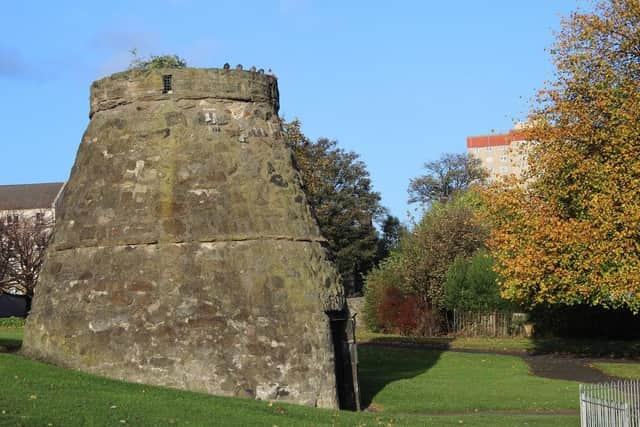This Edinburgh landmark was used to burn infected clothing during the plague
Enter the park from Lochend Road and you’ll be greeted with a peculiar stone-built structure dating from the 16th century.
Resembling a giant, real-life version of Oor Wullie’s famous bucket, the historic building is actually a beehive-shaped doocot, and is believed to have served Lochend Castle, a part of the feudal lands belonging to the Logans of Restalrig in centuries gone by. The castle no longer stands and was replaced by Lochend House in the early 19th century.
Advertisement
Hide AdAdvertisement
Hide AdThe wealthy Logans built the doocot to house pigeons in order to provide a welcome source of fresh meat and eggs during the long winter months. It is estimated that there were more than 1000 nesting holes in the doocot, which was built on land previously known as Logan Lea.
But this land, according to local legend, has an alternative name: Kilnacre.
Plague outbreak
The name Kilnacre is reputed to date from the time of the Great Plague of 1645, when the doocot was temporarily used for the incineration and boiling of infected clothing, bedding and other items belonging to local plague victims.


The plague epidemic which gripped Edinburgh and Leith in 1645 was, without exception, the most devastating that the two towns ever experienced. In the capital it is estimated that up to half of the population died, while in Leith the percentage was even higher - perhaps due to the steady influx of ships from all over Europe.
The Leith plague outbreak reportedly started in April 1645. By the end of the year, an estimated 3,000 people had died an excruciating death.
Those who succumbed to the disease were forbidden to leave their homes and ordered to hang a white cloth from their window to warn others that the property was infected. Those who failed to comply faced capital punishment.
The burning and boiling of belongings was part of purification measures taken by the authorities. Infected houses were also fumigated by burning heather in them.
A plague doctor visited contaminated properties on a daily basis. These new-age medics were distinctively dressed in long leather cloaks, large brimmed hats and grotesque beaked masks filled with sweet-smelling herbs. Doctors believed the herbs would repel the “evil smells” which were thought to carry the disease.
Advertisement
Hide AdAdvertisement
Hide AdOne of the plague doctor’s principal tasks was to pierce and drain the buboes – the pus-filled lymph nodes, of the victims before they ruptured independently and became septic. The wound would then be cauterised with a heated iron.
So severe was the death toll during this time, that mass graves were dug at what is now Great Junction Street, Wellington Place and Leith Links. Fortunately, it was the last time Leith would suffer a bubonic plague epidemic.
In the mid-19th century, long after the plague disappeared from the area, the doocot was given a new lease of life, when it was used as a boat house for the Royal Humane Society, which was established to save people from drowning.
A message from the Editor:
Thank you for reading this article. We're more reliant on your support than ever as the shift in consumer habits brought about by coronavirus impacts our advertisers.
If you haven't already, please consider supporting our trusted, fact-checked journalism by taking out a digital subscription at https://www.edinburghnews.scotsman.com/subscriptions.
Comments
Want to join the conversation? Please or to comment on this article.